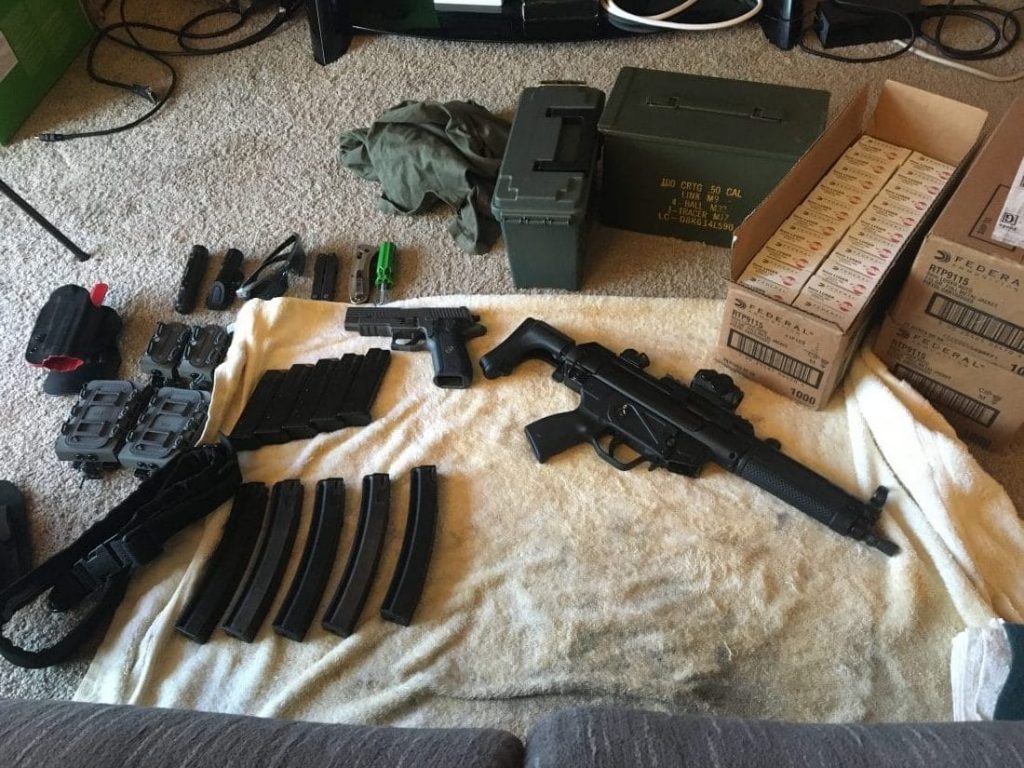Mike Jones, THE Garand Thumb, did a video on the SEAL adopted Flux Raider P320 variant. Cool video, watch it when you have a 30 minute break to enjoy.
But my discussion here isn’t about the Raider, per se, it is about the concept of turning a sidearm into a PCC.
Are there advantages?
Absolutely.
When done correctly, with a special attention paid to the goal(s) of the firearm, it is a light, compact, and highly viable personal protective option. But let’s dispel some ideas I’ve seen floated around about this concept and get into why.
Conversion on Demand
Toss the idea of turning your sidearm into a carbine under stress. Get rid of it. It’s gone, done, burn it in the dumpster fires of mount dumb. The PCC’d pistol is now a carbine, if you want a sidearm you need another pistol.

If you need a gun, the last thing you want to be doing is taking a functional gun and making it non-functional in order to turn it into an unzeroed carbine. Use the pistol you have in working condition and may the odds be ever in your favor.
I don’t know how many places I have seen the idea of stripping your working firearm down and throwing it into a chassis like some kind of tactical transformer game where it now gains a +2 stat boost, but that isn’t how these things work in real life. If your pistol is in a chassis and zeroed, it stays in the chassis. We’ll get to chassis’ in a minute too. Not all are created equal.
Treat the chassis’d pistol like a separate carbine, it is no longer the carry gun you once had.
Chassis
Your.
Chassis.
Must.
Hold.
Zero.
The easiest way to assure this is use one that uses the sights on the slide, like the Flux Raider. Another is if it uses just the fire control/lower of the pistol and locks it into an independent upper that is part of the chassis.
If the chassis locks around the whole complete pistol but isn’t using the pistol sights, red flag. Hard stop. Pause.

Your sights must have a fixed relationship with your barrel and firing mechanism. Full stop. End of discussion. If your sights do not have a fixed relationship with the barrel and firing mechanism, like in the RONI where its attached to the polymer light rail and can flex independently, then that chassis is at best a toy. It should not be used for serious purpose as you can significantly disrupt the barrel’s relationship with the sights and hit something you didn’t intend.
We’re talking magnitudes more deflection than you get off of pressing on an M4 barrel against a VTAC barricade, several inches in either direction at 25 yards. Say goodbye to that “hostage” shot.
“Keith, lasers stay zeroed on the rail.”
Yes, because you aren’t grabbing the laser. You aren’t putting pressure onto the gun and into your shoulder with substantial leverage and mechanical advantage via the laser. You are doing that with these types of chassis systems.
Just say no, with the exception of just for fun.
Should you invest in a converted PCC?
Maybe.
The good ones have very significant size and weight advantages, being just a bit more real estate intensive than their duty pistol counterparts. They also feed from the same magazines giving you both ammunition and magazine compatibility with your sidearm (potentially). They are going to fit in some of the smallest bags for carry and even a few holsters if your situation and use case allow for them.
The downside is you are limiting (potentially) the amount of other advantages a carbine can give you in ancillary gear and handling characteristics. That may not matter, the possession of a shoulder fired solution with a red dot and a light might be all the extra edge that you need. However the magazine compatible options like Glock pattern ARs or the APC9 Pro also offer a strong hybrid of the capabilities of the converted pistol PCC with the additional ancillary and functional advantages of the carbines.
So, do those advantages and limitations fit your use need?



